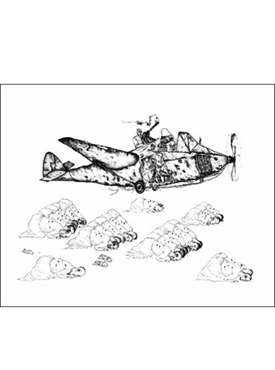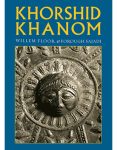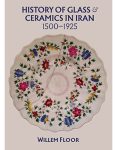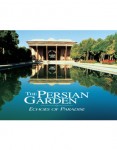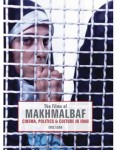About the Book
Life In Iran is a series of powerful drawings by Iran’s greatest satirist. Drawn in exile during the 1979 revolution, they remain as meaningful and sharpsighted as ever. The characters are situated in an Iran of a century ago, and dressed in the clothes of the Qajar dynasty, but their predicament is both universal and timeless. Ardeshir captures the historic truths of the Third World: autocratic rule, opression, violent religious conflict, oil riches, and high-tech weapons in the hands of barefoot boys. An informative introduction by Bernard Reilly, head of the Curatorial Section of the Library of Congress’s Prints and Photographic Division, helps us view these drawings in the context of 19th and 20th century political art. Ardeshir received the Erwin Swann Award for Excellence in Cartoon, Caricature, and Comic Strip Art for this series of drawings, which are now part of the Library of Congress’s political drawings collection.
Reviews
“A series of 39 drawings created between 1978 and 1980 by Mohassess, an exile from the last years of Iran’s Pahlavi regime. The sharply etched ink works are implicitly critical of both the Shah and the fundamentalist mullahs who overthrew him in the Revolution of 1979. The pointed caricatures were published widely in an Iranian newspaper and in the London-based political weekly, Iran Shahr. Mohassess left Iran in 1976 after the Shah banned publication of his work, and the national police harassed him. To make his satirical principles timeless, Mohassess has dressed his tyrants in the clothes and trappings of the Qajar period of a century ago. The drawing entitled “The Men Bent in Prayer to God and the Government Planes Arrived” captures the collision of persistent ancient ways and brutal modern technology, the aircraft is a Red Baron era biplane, and a Gatling gun perforates the backs of the devout. The depiction of Mohassess’s suffering Iranians is reminiscent of Ben Shahn’s Depression-era workers or Goya’s peasants, and his compositions recall classical Persian miniatures.”– – Washington Post Book World
“[Life in Iran] presents a unique version of life in Iran. Ardeshir Mohassess, Iran’s greatest graphic artist and visual satirist, gives us his reading of Iran’s most crucial time in modern history, the years surrounding the 1979 Revolution. On one hand, Mohassess illustrates the cruelty and meanness of the Shah’s government, his despotism, tyranny, and the propaganda that he used; on the other hand, he also depicts the opposition’s adolescence, blindness, and attitudes that belong to the past. . . . With these superb line and ink drawings. Mohassess abandons some of his ghastly fantasy drawings and achieves his most sophisticated level in terms of style, technique, and manner of presentation. . . . One of the greatest art works coming out of Iran’s revolution.”
– – Center for Iranian Research and Anlysis Bulletin
Excerpt
Introduction by Bernard F. Reilly, Jr. This book deals with a remarkable and compelling body of artistic work. It displays for the first time in its entirety a series of drawings born of a time of great political upheaval-the last years of Iran’s Pahlavi regime. The series is composed of 39 drawings by Ardeshir Mohassess. These are executed in pen and India ink on large sheets of white paper, sheets measuring on the average about 14 by 24 inches. The series is a monumental work created over the course of three years, between 1978 and 1980, and titled by the artist simply Life in Iran. These works now are preserved in the collections of the Library of Congress.
Ardeshir Mohassess is generally recognized as Iran’s greatest living visual satirist and one of its most eloquent political commentators. Born in Rasht in 1938, Ardeshir attained early in his career international recognition as a cartoonist and a large following among Iranian poets, writers, and other intellectuals. He appealed to his many countrymen who were disaffected with the Shah and yet did not subscribe to the religious fundamentalism of the mullahs. Ardeshir’s work, critical of extremists in both camps, became the voice of dissent in Iran in the 1960s and 1970s. The artist’s drawings were widely published in Iran in the evening newspaper Kayhan, and abroad in the London-based political weekly Iran Shahr. Eventually, the Shah banned publication of his work. Harassed by the national police apparatus, Ardeshir left Iran in 1976, going first to Paris and a year later to New York, where he lives today.
In 1979 the Shah’s government, riven by internal discord and a growing popular revolution, finally fell. The actual collapse was preceded by many bloody days, during which a great human toll was taken by the desperate efforts of the dying government and its security force, Savak, to suppress dissent. 1978 saw the burning of the Rex Cinema (700 people died) and the massacre of demonstrators at Shiraz; in 1979 a fire and another massacre in a mosque in Kerman took several hundred more lives. And yet, although a new regime replaced the old, the hoped-for coalition of religious and intellectual leaders that many thought the Revolution would bring never materialized.
The Life In Iran series was produced not during the artist’s time in Iran, but during the years of the Revolution and its aftermath. It is perhaps Ardeshir’s finest achievement. The series differs markedly from the artist’s other drawings, which are mostly caricatures, populated by grotesque and whimsical imaginary creatures, insects, and scorpions, and, on occasion, by figures from Iranian political life. The drawings in Life In Iran have a grandeur of scale, a sobriety of tone, and a realism which mark the series as an undertaking of a higher and more serious order.
The drawings have few, if any, counterparts in the world of political cartoons. The latter is a highly conventionalized idiom employing a limited vocabulary of symbols and capable of little subtlety. Cartoons tend to be historically specific, firmly situated in their particular time and place. Ardeshir, for the most part, rejects the symbols and conventions of the idiom. The drawings in Life in Iran, moreover, avoid topicality and possess even an intentional ambiguity. While the atrocities which inspired these drawings were indeed real, they are never portrayed with any specificity. In Life in Iran, the Pahlavi regime and its officers are masked in the clothing and trappings of the Qajar period.
In the long tradition of artistic political commentary, the closest analogy to Ardeshir’s work is that of the Enlightenment-era Spanish artist Francisco Goya y Lucientes. Employed at the court of Charles IV, Goya witnessed from a privileged vantage point the corruption of a decadent regime, the prejudices and superstitions of his own society, and the atrocities committed upon his countrymen by Napoleonic occupying troops. In several series of prints, including Los Desastres de Guerra, Los Caprichos, and Los Proverbios, Goya presents a deeply cynical picture of his time as an age pervaded by human evil. Like Goya, Ardeshir is an acute observer of his society, and projects in his work a vision which is both highly personal and universally understood.
Sadly, there is a timely universality to Ardeshir’s series. Much of what he portrays is still all too familiar more than a decade after Life In Iran was produced. Ardeshir’s revelations are, moreover, not peculiar to Iran, or even to the Middle East. They are the realities of the late-twentieth century. The faces of Ardeshir’s people betray a combination of intensity and weariness bred of struggle and uncertainty. They call to mind Ben Shahn’s Depression-era farmers. (Shahn is an artist for whom Ardeshir has often expressed great admiration.) But unlike their American counterparts, Ardeshir’s people possess the self-containment of those who are deeply absorbed by religious belief, whose focus of being is inward rather than outward. Ardeshir’s people are not the victims of clashes of political ideology or economic agendas. The conflicts they endure are brought about by the unconstrained ambitions of autocratic rulers, conflicts rooted in religion and in the blood: the wholesale extermination of the Kurds in Iraq, “ethnic cleansing” in the Balkans, the fighting between Catholics and Protestants in Northern Ireland, and between Christians and Moslems in Lebanon. In their world, lines of battle are usually drawn between faithful and apostate, oppressors and martyrs. Political discourse gives way to propaganda, religious dogma, and rhetoric replete with the imagery of fire and blood. The men and women in Ardeshir’s What’s the Fire of a Bullet When the Heart’s Aflame, casualties of the many bloody attempts by the Shah to stem the rising tide of fundamentalism (such as Tehran’s September 1978 Bloody Friday), march resolutely forward unchecked even by death.
Too familiar also is the deadly meeting of ancient ways of life and modern technology. This is striking in the traditionally dressed rural tribesman of Afghanistan and Somalia brandishing AK-47 rifles, and the rapidity with which these supposedly primitive societies embrace and master computers, video-and sophisticated weapons systems. Ardeshir’s The Men Bent in Prayer to God and the Government Airplanes Arrived exposes the tragic paradox inherent in westernization campaigns like that of the Shah, which bring about the deadly intrusion of the massive destructive power of modern military technology into an essentially medieval way of life.
We recognize also in Life In Iran the brutalization of societies which do not, or cannot, insulate their civilians from the violent domain of the professional soldier. Ardeshir’s adolescent guerrillas reflect the mobilization of children deprived of the shelter from adult realities enjoyed by youth in more privileged countries. Innocence is a casualty of the heavy arming of societies, societies where gunpowder is as common as salt. During the Sandinista Revolution, Nicaraguan village children were known to scrawl drawings of 9mm automatic weapons, accurately rendered from first-hand experience, on the walls of their villages.
The narrative voice assumed by Ardeshir in Life In Iran is one of his most original creations. The artist constructs the the titles of his drawings to read as though they were headlines, captions under newspaper photographs, or broadcast news quotes; the subject is often announced in the abbreviated phrasing of the television voice-over. To Avoid the Danger of Possible Assassination the King is Trying to Remain Unknown Forever and The King Personally Oversees the Execution of Compulsory Education present the subject in the ostensibly disinterested words of an impersonal commentator. By so doing, the artists skillfully removes himself, his own voice, from the mediating role of narrator. The contrast between the deadpan of the narrator and the outrageous character of the scene itself results in a withering irony. Ardeshir’s titles are sound bites with venom.
In many of the drawings, the artist also places the figures in a self-conscious confrontation of the viewer, as if posing for a group photograph. In Finally Order was Reestablished in That Rebellious Region, this device is used to great effect. In the background, the bodies of the executed men twist in their grisly rotation at the end of taut lines, weighing heavily on the viewer. But the onlookers below are seemingly unperturbed, and ignore the victims to strike a dignified pose for an implied cameraman.
These are indeed media-age drawings. They satirize a self-conscious regime highly sensitive to the power of the media in the shaping of international opinion, and the importance of that opinion in a world where the destinies of nations are interconnected. The official voice of the regime is at once undercut by an ironic discrepancy between what is said and what the drawing reveals. Engaged in atrocious deeds, the regime portrayed almost seems to await reproach.
In this respect, Ardeshir’s Life In Iran again recalls Goya’s Los Proverbios. In his series, Goya adopted the matter-of-fact, authoritarian voice of Conventional Wisdom.
In so doing, Goya gave voice to a society spiritually impoverished by its own hollow moralism and viciousness. In Ardeshir’s work one sees a regime trying to carefully control its public image even as its grip on internal order slips away.
In the end the attentive viewer discerns in Ardeshir’s work another voice-one not so dark in outlook as the prevailing one. There is underneath the cynicism a strain of impish humor manifest in the inclusion of a mischievous waving boy in the Birth Control Seminar portrait. The simple, rudimentary humor of this voice relieves the brutality and hypocrisy in the world that Ardeshir shows us, and offers some hope that these grim scenes will someday no longer be familiar.
About the Author
Ardeshir Mohassess is recognized internationally as Iran’s leading caricaturist and graphic artist. Through his art one sees him as a man of sharp and angry perception who wields his sarcastic pen mercilessly decapitating bodies, twisting them into unnatural shapes, turning the world upside down all in an attempt to expose the bitter truth that lies, he seems to feel, under the banal surface of everyday reality. In person, Mohassess is a remarkably sensitive, humble, and mildmannered man with a philosophic sense of humor that focuses not on the foibles of particular individuals, but on what he finds to be the pathetic or absurd in the human condition. Born in Rasht, in northern Iran, on September 9, 1938, he grew up in an artloving family. He began to draw early, before he could even verbalize his ideas, but has never studied art formally. After completing his secondary education, he was ranked first among all the applicants to the University of Tehran Faculty of Fine Arts. But he decided to study law at the same university, thinking perhaps that he might follow his father’s career as a judge. His baccalaureate degree in political science and law, as he wryly puts it, “was only to add a bit of glamour to my curriculum vitae.” Upon graduation, a position of librarian in a government office, where few made use of his services, provided an unparalleled opportunity for several hours of reading each day. As with his art, he preferred self education to formal study.
In the early 1960s, Mohassess’s caricatures and other drawings began to be published in Iran. Since then, his works have appeared in both Iranian and Western newspapers and magazines. His drawings have been widely exhibited in Iran (until the 1979 revolution) and abroad by private galleries as well as several major museums. Leading graphic arts magazines, such as Graphis (Switzerland), Graphic Design and Idea (Japan), Graphic (West Germany), and Communication Arts (U.S.), have featured his provocative works, and more than fifteen collections of his drawings, as well as several books on his art, have been published in Iran, Europe, and the United States.

